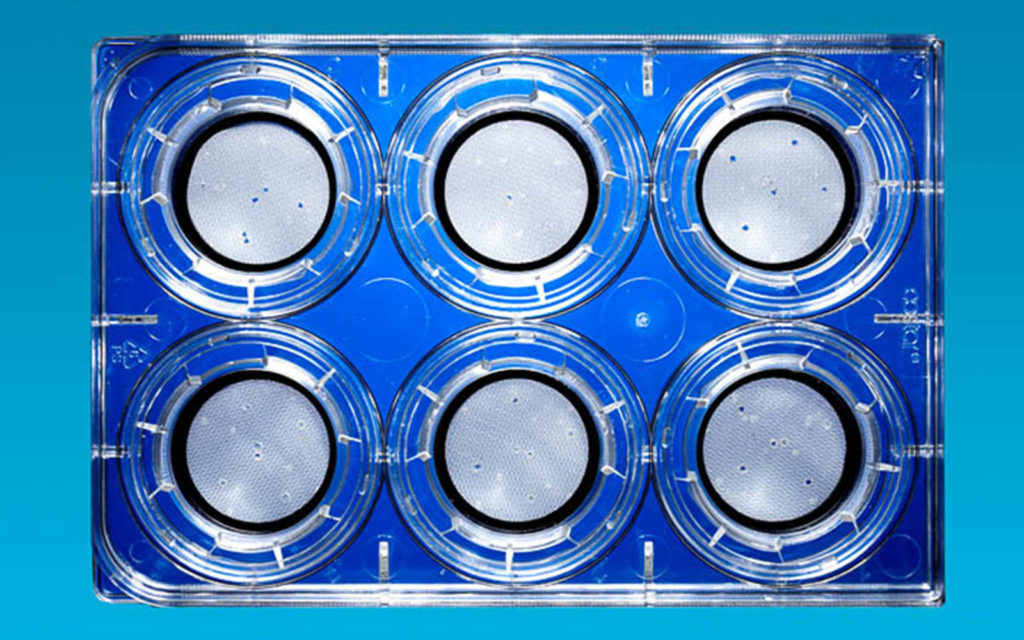By Janet Preus
“Failure’s not a bad thing; it’s a necessary requirement of product development,” said Dr. Martin W. King. “But if you fail, fail early,” he added. King is a professor in Textile Engineering, Chemistry and Science (TECS) at the Wilson College of Textiles, North Carolina State University. He was addressing an audience at the Advanced Textiles Conference at IFAI Expo 2019 in Orlando last fall. There are critical steps and an organized process that can help support ultimate success, Particularly in medical device development.
One is the Stage-Gate method developed by Dr. Robert G. Cooper, a blueprint that can make the product development process more effective by following predetermined steps, or stages. Each stage has certain activities to complete prior to obtaining whatever approval is appropriate before moving to the next stage. The entrance to the stage is called a gate. (Stage-Gate is a registered trademark of Product Development Institute Inc.)

The key goal of the Stage Gate Process can be stated simply: do the right projects and do the projects right, but that’s easier said than done. To begin, a new enterprise should ask itself four basic questions, according to the process, and these should be carefully considered right upfront:
- What is it?
- Does anyone care? (This is where early customer feedback is important.)
- Can we do it? (The larger questions of product iteration are studied.)
- Can we make money? (The financial realities are carefully analyzed.
King also noted the predominant reasons for a business’s failure. In fact, the worst-performing businesses are consistently lacking in two areas: 97 percent fail in assessing the value of the product to the customer, and 93 percent do either a poor job of market research, or don’t do it at all. Deficient technical assessment, as well as poor business and financial analysis described 77 percent of poorly-performing businesses.
What is it that ensures success for others? King offered a list of eight critical drivers for businesses that want to launch a new product. First, the product must be not just superior, but unique. Next, the procedures must include building in the voice of the customer for a customer-focused end result. Proper “upfront” homework in the research stages is necessary for the project to pay off in the end.

King also cautioned against “scope creep,” so the business develops and maintains a sharp definition of the product. Using “spiral development” that builds, tests, gets customer feedback and submits to revision as the process grows will also help to keep the product on track.
Developing a world product that can be targeted at international markets can support a successful launch, but the ability to tailor it locally is also important. In fact, a well-conceived launch that can be properly executed is also a key driver. Lastly, speed counts in getting a product to market, but not at the expense of a quality execution.
For those developing new medical devices, he offered a specific “necessary steps” process list that goes beyond identifying a need and designing the device. The next steps involve synthesis of materials and then testing them. According to King, there is a need to evaluate materials testing, because “we have a need for materials that last a long time,” such as for a heart valve. The FDA has an expectation that the valve will last 10 years, but “if you can make it last longer, that makes a lot of sense,” he said. Other applications and uses require materials that don’t last. Dentists’ sutures, for example, should be made of a material that will dissolve in a short period of time.
Fabrication doesn’t happen until materials testing is complete; later, the device itself will be tested, regulatory issues addressed, clinical use tested, and finally there will be explants analysis. Facilitators may include, at different stages, physicians with various specialties; engineers of many kinds; machinists; designers; and regulatory specialists, including government agencies.
King said that the accuracy of assessments and data should be pushed and increased at each stage. The more uncertainty and risk that are removed, the better, as more time and funding are committed. This brings us back to the idea of “failure,” which might not be failure at all, but necessary process and development revisions, which is why “failing early” can be a good thing.
Janet Preus is senior editor of Advanced Textiles Source. She can be reached at jlpreus@ifai.com.
 TEXTILES.ORG
TEXTILES.ORG


